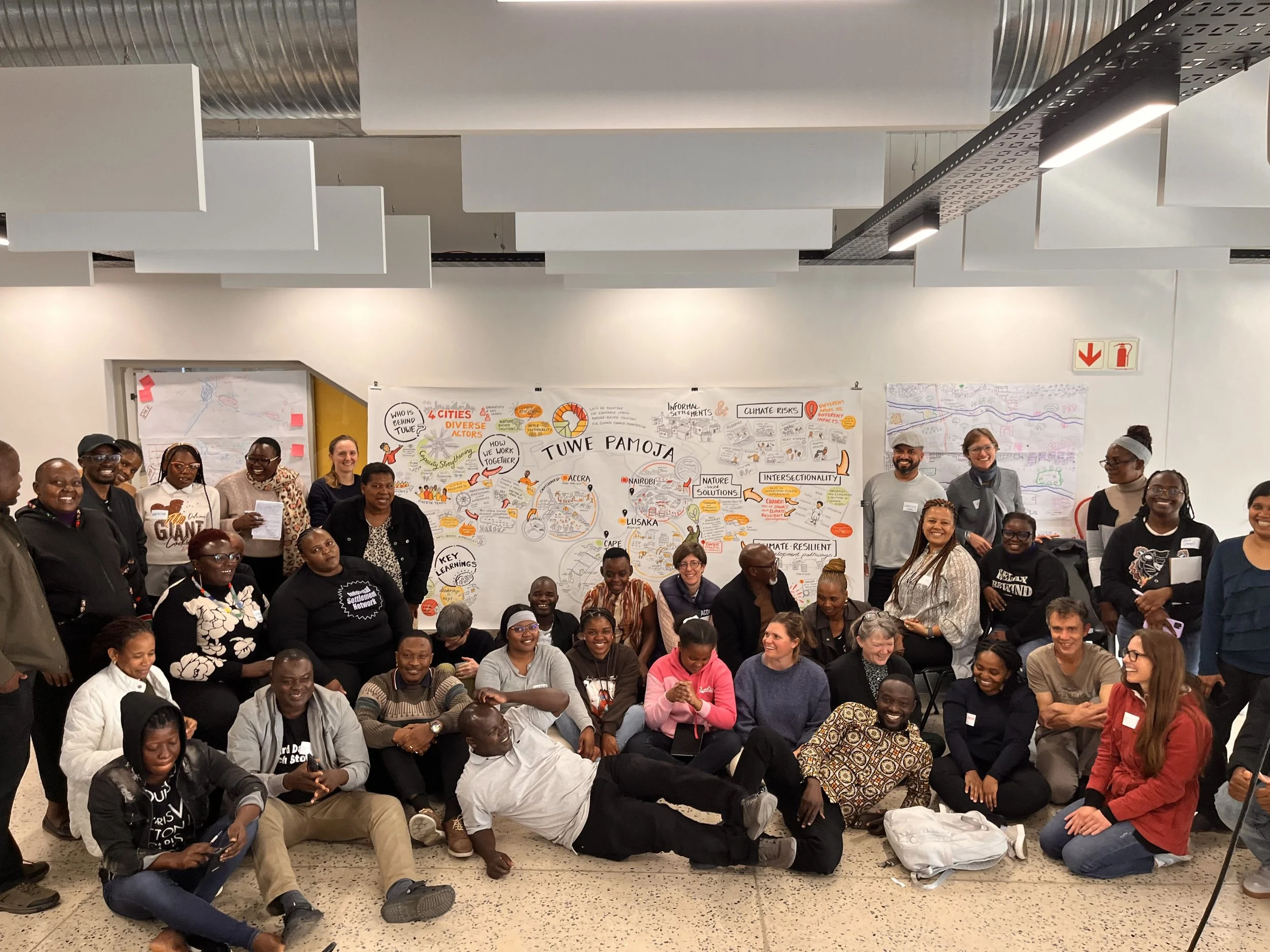Key learnings from the first in-person Tuwe Pamoja meeting
The first in-person meeting of the Tuwe Pamoja project team brought together over 40 participants from Ghana, Kenya, Zambia, South Africa and Canada from 4-7 August 2025.
Tuwe Pamoja is a research project that is part of the CLARE programme and aims to strengthen the capacities of city actors for planning climate resilient and equitable nature-based solutions that centre the voices of residents in informal settlements.
Hosted at the Hasso Plattner School of Design Thinking Africa at the University of Cape Town (UCT), the four-day workshop created space to connect diverse expertise, reflect on progress, and shape the next phase of work.
The workshop combined presentations, participatory arts methods, field visits, and co-design sessions in an interactive and engaging format. It allowed partners from Slum Dwellers International (SDI), their affiliates, as well as community organisations and academic institutions to deepen collaboration on Tuwe’s three cross-cutting themes across its four focus cities.
Key learnings
Workshop participants reflected on how to work effectively across disciplines and geographies. Central to this, participants prioritised building trust, which requires humility, openness, and space for vulnerability. During the Art-Based Participatory Methods session, participants engaged in an art-based exercise that used the body as a site of learning to reflect on their relationships with nature.
Tuwe Pamoja explores how nature-based solutions (NbS) can be best utilised in informal settlements. An emerging insight was that these interventions are most effective when linked to tangible benefits such as food, water, and livelihoods. Community groups are already implementing NbS without naming them as such, highlighting a need to adapt language and academic approaches to community contexts. Barriers to NbS were cited from the different cities, including land tenure insecurity, lack of policy recognition, and risks of gender-based violence. At the same time, opportunities exist to embed NbS in municipal planning frameworks and to communicate them in accessible, non-technical language.
Climate Resilient Development Pathways (CRDPs) helped teams reflect on how to balance adaptation, mitigation and development actions over time. CRDPs offer a way to embed systems thinking and to connect local grassroots action with national and city-level planning. Success depends on bridging bottom-up innovations with top-down policy, which each city aims to undertake in relation to their priorities.
Intersectionality was underlined as a critical lens for adaptation, with gender, age, class, and disability strongly shaping vulnerabilities and responses. Participants emphasised that climate adaptation is not neutral: it can reinforce inequalities if not designed inclusively. Equity dimensions such as procedural, recognitional, distributive, intergenerational, and epistemic equity must be addressed. Art-based and culturally resonant methods can make intersectional discussions more accessible in community contexts.
View a high-level summary of learnings and from the Tuwe Pamoja meeting here.


